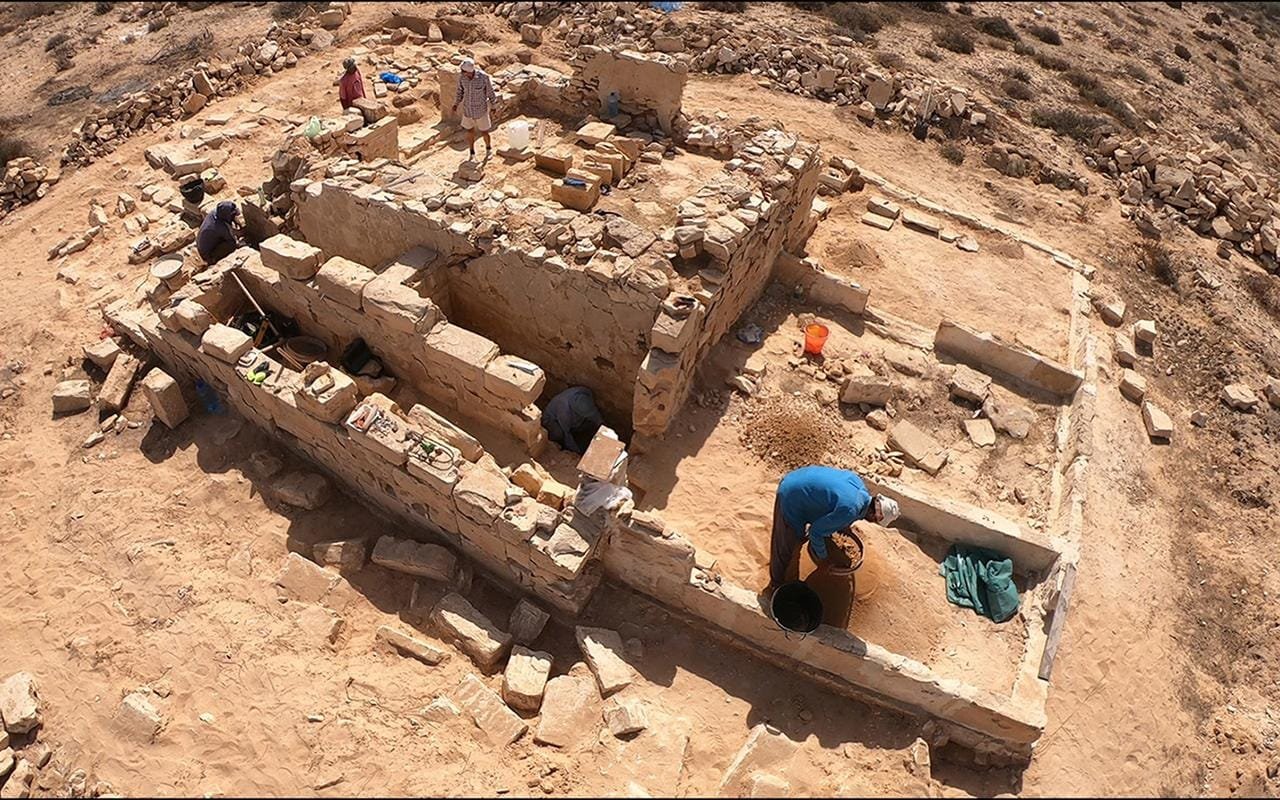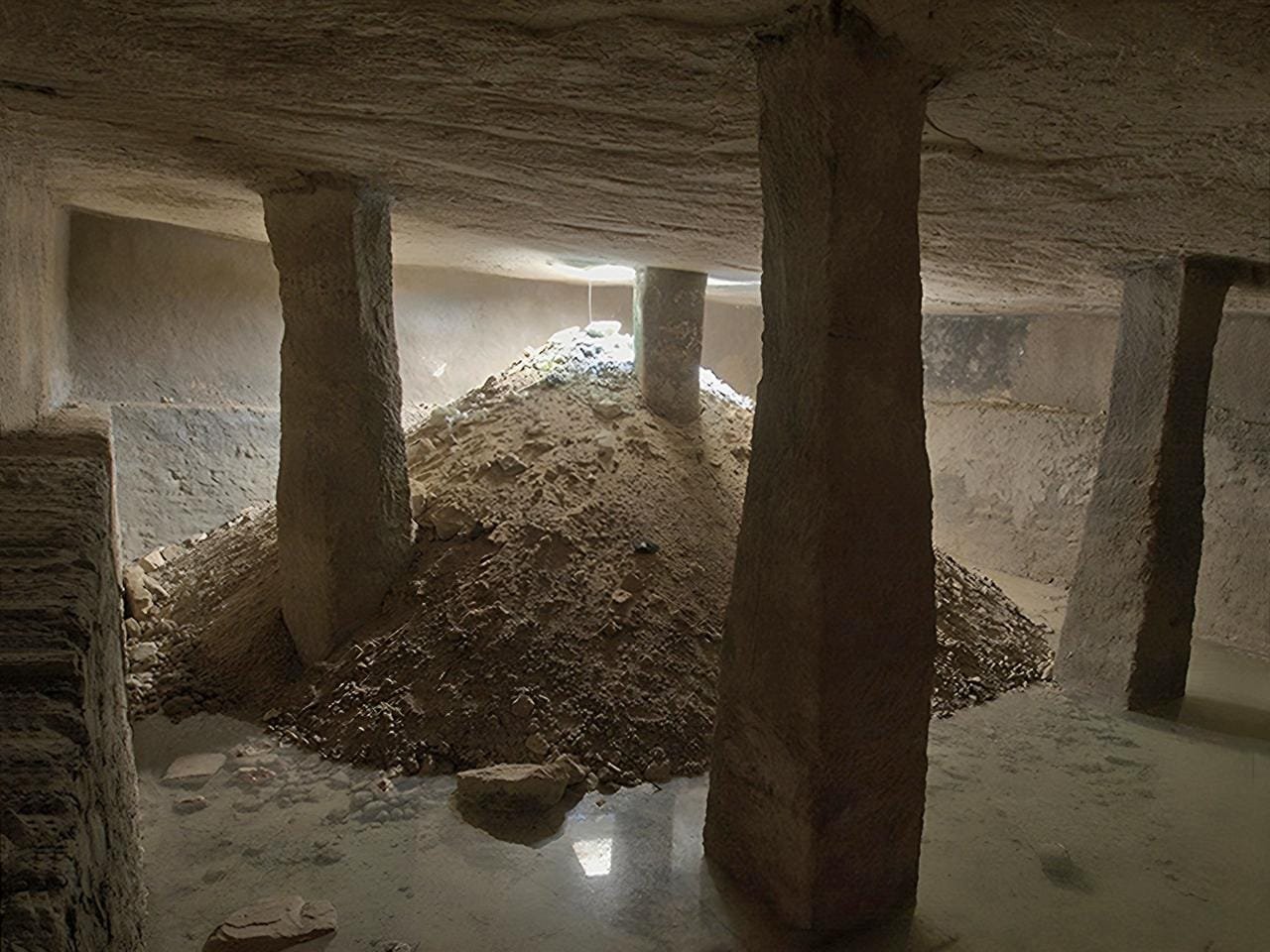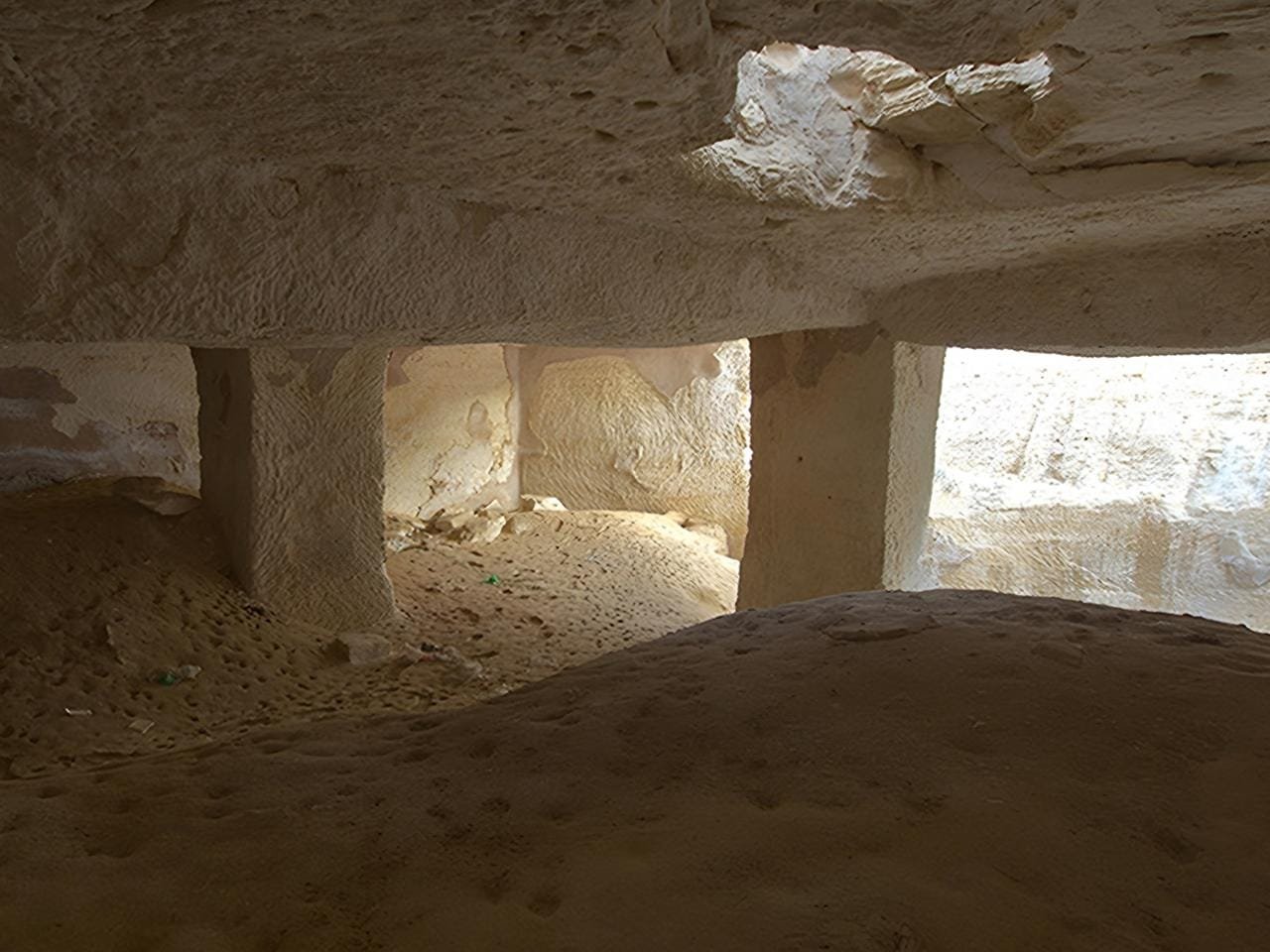Archaeologists have uncovered remarkable finds at Darazya, a site located approximately 100 kilometers west of Alexandria, Egypt. Known in antiquity as Derhis and referenced by classical geographers like Strabo and Claudius Ptolemaeus, the area holds a dual legacy of Greco-Roman settlement and World War II military activity. Excavations undertaken during the 2021 and 2022 seasons have revealed significant structures from both eras.
 Remains of House H1 undergoing conservation. Credit: P. Zambrzycki, Antiquity (2024)
Remains of House H1 undergoing conservation. Credit: P. Zambrzycki, Antiquity (2024)
At its heart, Darazya features the ruins of an ancient settlement dating to the Hellenistic and Roman periods. Among the discoveries are three distinct buildings identified as Houses H1, H2, and H3. Constructed using rubble masonry and lime mortar, these structures exhibit layouts typical of the era, including oikos-style residences organized around central courtyards. Fragments of stone altars and cornices found in House H1 suggest the presence of domestic cult practices, while imported ceramics, such as Cypriot sigillata and thin-walled bowls, provide further evidence of its inhabitants’ economic and cultural connections.
House H2, distinct in its more elaborate design and in-situ columns, appears to have served an administrative or communal function. Meanwhile, the shared architectural features of these houses with structures at the nearby Marina el-Alamein site support their dating to the 1st and 2nd centuries CE.
One of the most striking discoveries is a pair of subterranean cisterns, designated C1 and C2. Carved into the limestone bedrock, these five-meter-high cisterns feature quadrangular designs with central pillars for ceiling support. Accessible via narrow shafts, their walls were originally lined with hydraulic mortar, underscoring the ingenuity of the Greco-Roman water management systems essential for sustaining life in this semi-arid region.
 One of the 1st century CE underground cisterns discovered in Egypt. Credit: P. Zambrzycki & S. Popławski, Antiquity (2024)
One of the 1st century CE underground cisterns discovered in Egypt. Credit: P. Zambrzycki & S. Popławski, Antiquity (2024)
A study published in the journal Antiquity highlights their significance: “These well-preserved cisterns and channels provide a better understanding of the extensive water supply systems of the settlements in this semi-arid area.”
The historical narrative of Darazya extends into the 20th century, where it played a pivotal role during World War II. Serving as a stronghold for British forces in the Battle of El Alamein (1942), the site contains a network of 17 underground shelters connected by corridors and reinforced with concrete. These structures, constructed from limestone blocks, reflect the strategic ingenuity employed during wartime.
 Another of the underground cisterns found in Darayza, Egypt. Credit: P. Zambrzycki & S. Popławski, Antiquity (2024)
Another of the underground cisterns found in Darayza, Egypt. Credit: P. Zambrzycki & S. Popławski, Antiquity (2024)
According to the Egyptian-Polish Conservation Mission, thermographic and material analyses have been conducted to inform ongoing preservation efforts for these shelters. These measures aim to maintain their structural integrity while enhancing their accessibility for public education.
As conservation efforts progress, plans are underway to create visitor routes that connect the ancient Mediterranean heritage with World War II landmarks. Researchers anticipate that Darazya will become a regional tourist attraction.
Work at Darazya has included wall reinforcements, localized fillings, and partial reconstructions to enhance the site’s legibility. Such efforts not only safeguard its physical remains but also make its story accessible to a broader audience.
More information: Czerner R, Bąkowska-Czerner G, Zambrzycki P, Grzegorek W, Popławski S. (2024). Darazya at El Alamein: a Greco-Roman settlement against the backdrop of an important Second World War battle. Antiquity: 1-8. doi:10.15184/aqy.2024.192





